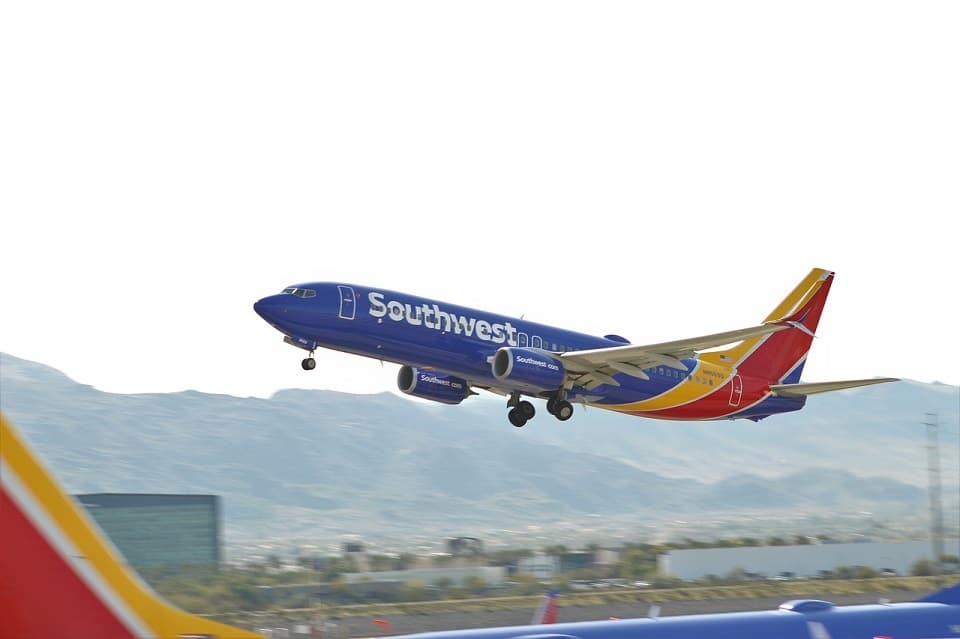Airlines
Southwest Airlines Offers Nonstop Seasonal Service for Spring Break Travel

Southwest Airlines Co. is inviting customers to plan spring break vacations beginning today with the expansion of its flying schedule through April 8, 2024. To address seasonal travel patterns and demand, the airline provides more nonstop options for Southwest® Customers, especially those traveling on peak days, when new time-saving nonstop service complements a schedule of daily connecting or same-plane service.
Southwest Airlines® keeps addressing customer demand by resuming popular seasonal routes and expanding its international service.
Japan Airlines Set To Fly Airbus A321P2F In Spring 2024(Opens in a new browser tab)
On Saturdays between Baltimore/Washington and Belize*, the biggest airline in Baltimore will launch new nonstop service on March 9, 2024. Southwest reintroduces nonstop Saturday service between: on the same day as seasonal international service is resumed. 1. Baltimore and Grand Cayman, 2. Baltimore and Turks and Caicos, 3. Baltimore and Cabo San Lucas/Los Cabos.
Beginning March 9, 2024, the airline resumes seasonal nonstop service on weekends between Baltimore and Panama City, Fla. The airline also resumes nonstop service on some days of week in March between Baltimore and Destin/Ft. Walton Beach, Fla.
Southwest airlines Launches sale with Fares(Opens in a new browser tab)
Beginning on Saturday, March 9, 2024, Southwest will launch seasonal nonstop service between St. Louis and Los Cabos, Mexico, giving new meaning to the phrase “Gateway to the West.” The route completes the seasonal service between St. Louis and Punta Cana, Dominican Republic, which will resume the same day.
The carrier will restore seasonal weekend service between St. Louis and three Florida coastal cities starting on March 9: Palm Beach, Pensacola, and Destin/Fort Walton Beach. New Orleans Beginning on March 7, 2024, passengers looking for a fast route to California’s Bay Area will discover daily nonstop service restored between St. Louis and San Francisco.
On March 7, Southwest also resumes daily nonstop service between Austin and Charleston, S.C. A full list of all returning seasonal markets is at this link on Southwest Airlines.

Airlines
Air India Rolls Out A350s for Delhi-New York JFK and Newark Routes

In a major development for North American travelers, Air India has announced the deployment of its state-of-the-art Airbus A350-900 aircraft on two key routes: Delhi to New York and Delhi to Newark.
The service on the Delhi-New York route will commence on November 1, 2024, while the Delhi-Newark route will see its inaugural flight on January 2, 2025.
The introduction of the air india a350 will bring significant enhancements to Air India’s offerings, particularly with the launch of its Premium Economy class. air india retrofit This new class will feature 24 wide seats arranged in a 2-4-2 configuration, providing passengers with extra legroom and a more comfortable flying experience.
Soon, Air India aircraft will feature onboard WiFi & all-new cabins: Click here
“We are encouraged by the positive guest feedback we have received from the domestic deployment of our air india a350 interior to offer our hero product on the Delhi-New York JFK and Delhi-Newark routes. This is a significant leap forward for our U.S. operations that also underscores our commitment to continuous improvement,” said Campbell Wilson, Chief Executive Officer & Managing Director of Air India.
The A350’s Business class will set new standards with 28 private suites, each equipped with full-flat beds, direct aisle access, and personal wardrobes. Economy class will be configured to accommodate 264 passengers in a 3-4-3 layout. Across all cabins, passengers will enjoy the latest Panasonic eX3 in-flight entertainment system, offering over 2,200 hours of content.
Air India’s First A350-900: Interior, Routes, &Inflight Features: Click here
This strategic deployment marks a notable enhancement in Air India’s U.S. operations, with 60% of its flights to the U.S. now featuring new or upgraded cabin interiors. The air india new international routes currently operates 51 weekly flights to five U.S. destinations: New York JFK, Newark, Washington DC, Chicago, and San Francisco.
The revamped cabins, advanced in-flight entertainment systems, and improved service standards represent air india wifi commitment to providing a superior travel experience. “We believe this enhanced offering will solidify Air India’s position as a leading carrier and attract travellers seeking a world-class flying experience between India and the United States,” the airline stated.
Seats on these flights are now available for booking on Air India’s website, mobile app, and through travel agents, ensuring that passengers can easily plan their journeys on these newly upgraded routes.
Air India Economy vs Qatar airways economy: which is best?:Click here
-

 Travel1 week ago
Travel1 week agoAir India to Expand US Operations with Three New Routes After a Decade
-

 Travel2 weeks ago
Travel2 weeks agoWhy We Should Avoid These Stamps in a Passport
-

 Airlines1 month ago
Airlines1 month agoInvestigations Reveal Fake Chinese Titanium in Boeing and Airbus Jets
-

 Tech4 weeks ago
Tech4 weeks agoChina’s CATL Plans 1,800-Mile Electric Plane Launch by 2027
-

 Airport3 days ago
Airport3 days agoTop 10 Largest Airports in the World by Size
-

 Aerospace4 weeks ago
Aerospace4 weeks agoChina’s Fighter Jets Turn Wings into Autonomous Drones
-

 Airlines4 days ago
Airlines4 days agoAir India Rolls Out A350s for Delhi-New York JFK and Newark Routes
-

 Defence3 weeks ago
Defence3 weeks agoBoeing Enhances Chinook with New Engines and Block II Upgrades at $96 Million







